Research programs
The Materials Technology Institute comprises the following seven research programmes:
Polymer Technology
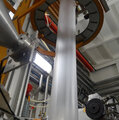
prof.dr.ir. P.D. Anderson, prof.dr.ir. L.E. Govaert, prof.dr.ir. G.W.M. Peters, dr.ir. L.C.A. van Breemen, dr. R.M. Cardinaels, dr.ir. T.A.P. Engels, dr.ir M.A. Hulsen, dr.sc.nat. M. Hütter, dr. A.T. Poortinga, dr.ir. P.J.G. Schreurs
The research is aimed at bridging the gap between science and technology in the area of polymer processing and design, through the use of experimental and computational tools in the modeling of the full thermo-mechanical history of material (elements) during their formation, processing and final design, to quantitatively predict properties of processed objects.
Continue to the Polymer Technology research group homepage
Mechanics of Materials
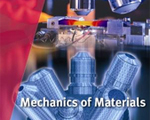
prof.dr.ir. M.G.D. Geers, dr.ir. W.A.M. Brekelmans, dr. V.S. Deshpande, dr.ir. J.A.W. van Dommelen, dr.ir. J.P.M. Hoefnagels, dr.ir. V. Kouznetsova, dr.ir. R.H.J. Peerlings, dr.ir. J.J.C. Remmers, dr.ir. O. van der Sluis,
The research activities concentrate on the fundamental understanding of various macroscopic problems in materials processing and forming, which emerge from the physics and the mechanics of the underlying material microstructure. The main challenge within this programme is the accurate prediction of mechanical properties of materials with complex microstructures, with a direct focus on industrial needs. The thorough understanding and modelling of `unit' processes that can be identified in the complex evolving microstructure is thereby a key issue.
Continue to the Mechanics of Materials research group homepage
Soft Tissue Biomechanics & Engineering
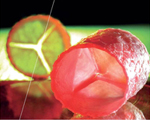
prof.dr. D.L. Bader, prof.dr. C.V.C. Bouten, prof.dr. S. Hoerstrup, prof, dr.ir. C.W.J. Oomens, dr. P.Y.W. Dankers, dr. N.A. Kurniawan, dr.ir. S. Loerakker, C.M. Sahlgren
Living tissues show an intriguing, active response to mechanical loading. Not only is the intrinsic mechanical response complicated, the ability of living tissues to adapt to mechanical loading by changing their structure and composition is fascinating. For example, tissue proliferation and differentiation is significantly affected by mechanical loading. A quantitative understanding of these phenomena, through experimentation and numerical modeling, is of crucial importance for many biomedical applications.
Continue to the Soft Tissue Biomechanics & Engineering research group homepage
Cardiovascular Biomechanics
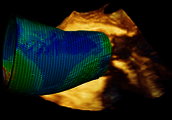
prof.mr.dr. B.A.J.M. de Mol, prof.dr. N.H.J. Pijls, prof.dr. C.A. Taylor, prof.dr.ir. F.N. van de Vosse, dr.ir. P.H.M. Bovendeerd, dr.ir. R.G.P. Lopata, dr.ir. M.C.M. Rutten,
The Cardiovascular Biomechanics group performs research in the field of computational and experimental biomechanical analysis of the cardiovascular system. Aim is to develop computational models, experimental techniques, and medical devices for clinical diagnosis, decision support, and intervention.
Inherent to the groups approach is the testing of these models and devices using data obtained from our in vitro setups, from isolated (slaughterhouse) in vivo beating heart experiments, and data from animals and patients, obtained in collaboration with our academic and clinical partners.
Continue to the Cardiovascular Biomechanics research group homepage
Orthopaedic Biomechanics

prof.dr. K. Ito, dr. C.C. van Donkelaar, dr.ir. B. van Rietbergen, dr. S. Hofmann Boss, dr.ir. W. Wilson
Musculoskeletal tissues are produced, maintained and adapted by cells as a response to their biophysical environment in health and disease. Of the latter, degenerative diseases have become more prevalent with an increasing socioeconomic impact in our ever aging population. With increased longevity and a higher level of activity, current treatment methods with purely synthetic devices may be limited. In this section, the disciplines of engineering and biology are combined to expand our understanding of the biomechanical function of musculoskeletal tissues as well as their adaptive developmental and physiological nature. The current goals are to investigate the mechanisms of degenerative diseases and to develop regenerative treatment strategies as applied to three musculoskeletal tissues, i.e. bone, articular cartilage, and the intervertebral disc.
Continue to the Orthopaedic Biomechanics research group homepage
Microsystems
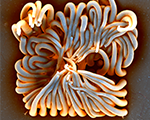
prof.dr.ir. J.M.J. den Toonder, dr. R. Luttge, ir. F.G.A. Homburg, dr. H.M. Wyss
The Microsystems group develops microsystems design approaches and out-of-cleanroom micro-manufacturing technologies that are rapid and flexible. These are applied to realize active mechanical control in micro-fluidics, to create and study cells and organs on chips, and to develop advanced microsystems applications in collaboration with industrial partners: Philips, Holst Centre, Xpress. The group has a new micro-fabrication lab in development, and access to the Nanolab@TU/e cleanroom.
Continue to the Microsystems research group homepage